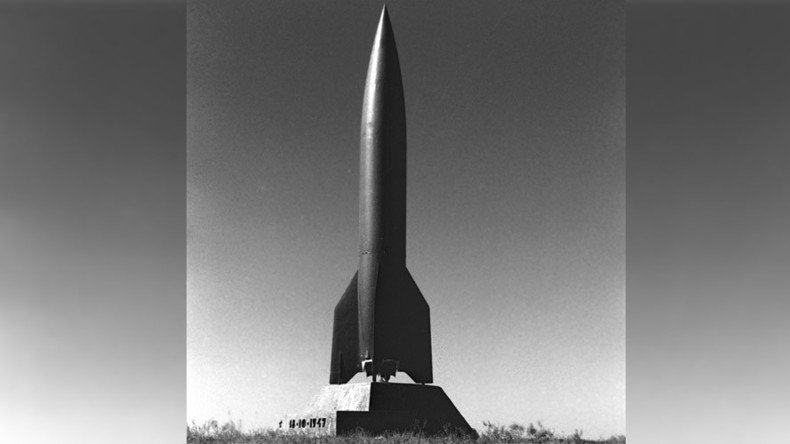1st Soviet ballistic missiles & heroic space dogs in declassified Kapustin Yar range PHOTOS

Russia's Defense Ministry has declassified a set of historic photos made at the legendary rocket firing range of Kapustin Yar, where all initial Soviet ballistic missiles were tested, reaching near space with the first canine cosmonauts on board.
Kapustin Yar range near Volgograd was initially used for testing military as well as meteorological and geophysical rockets. Even military projectiles usually carried scientific equipment.

The first "real" Soviet ballistic missile, the R-1 (Rocket-1), was launched on October 18, 1947. Bearing a strong resemblance to its German prototype, the captured A4 (Fau-2) missile, the R-1 had certain constructive alterations due to differences in engineering. It traveled 206.7 kilometers and deviated from the desired target by 30 kilometers.
The rocket's chief designer was the “father” of Soviet cosmonautics, legendary Sergey Korolev.

To increase the rocket’s range, the R-2 rocket was designed with a nose system that could be jettisoned. This was implemented to leave behind the rocket’s first and only stage once the rocket’s powered flight was over. The R-2 was also partly made of light aluminum alloys.

The R-family rockets were constantly modernized and on May 16, 1957, a R-2A rocket took two dogs, Ryzhaya (Redhead) and Damka (Damsel), and scientific equipment 210 kilometers up into space. It successfully returned to earth with both dogs alive.
All in all, there were 13 launches of R-2A were made in 1957-1960, sending the dogs Belka (heidy), Zhuchka, Palma and Kusachka (Biter) to altitudes of over 200 kilometers. Biter later changed her name to Intrepid, because she managed to visit space four times!

But the record flight some 453 kilometers up into space was made by dogs Belyanka (Blondie) and Pestraya (Motley) on a R-5A rocket on August 27, 1958. Both made it back to Earth, stressed out, but healthy.

In the meantime, on June 21, 1956, the R-5M missile weapon system became the first Soviet nuclear-capable ballistic missile officially adopted for deployment.

The famous R-7 rocket used to put the first manmade object into orbit, the famous Sputnik, was also initially tested at the Kapustin Yar range before being launched from Baikonur cosmodrome in what is now Kazakhstan.

The Kapustin Yar range was used as the test ground of all Soviet ballistic missiles at the time, among them the R-11 liquid-propellant missile in 1953-1954.

Although the R-11 had a range similar to that of the R-1, it was twice as small and therefore more easily transportable.

On March 16, 1962, a year after the Soviet Union put the first man, Yury Gagarin, into space, the Kapustin Yar range was officially re-purposed as a cosmodrome, following the successful launch of the Kosmos-1 satellite into space. Ever since, the facility has been used for performing space launches of small-sized satellites and for testing all Soviet and Russian military rocket systems.














